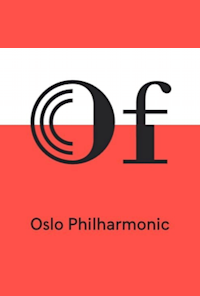A spring sacrifice both beautiful and wild.
We get a head start on spring by unleashing the raw power of Stravinsky’s scandalous, sensational and infinitely rich masterpiece The Rite of Spring. Prepare to hold on tight when Joshua Weilerstein conducts the music to the brutal sacrifcial ceremony. Weilerstein comes bearing further spring offerings in the form of two American works: Caroline Shaw’s playful and explorative Entr’acte, inspired by a “perfect Haydn moment”, and Samuel Barber’s melodious and pensive Violin Concerto, played here by the Norwegian winner of “Virtuos”, Sonoko Miriam Welde, who is also a participant of the “Crescendo” talent programme.
When the composer Caroline Shaw (b. 1982) heard the Brentano Quartet play Joseph Haydn’s string quartet No. 2, Opus 77, she was so captivated by the transition to the trio in the minuet that she felt compelled to compose a work around this single moment. This resulted in Entr’acte, which was first performed by the Brentano Quartet at Princeton University in 2011. “I love how some music (such as the minuets in Opus 77) suddenly transport you through Alice’s looking glass, in a sort of absurd, subtle, technicolour transition”, Shaw has said, and it is namely this transition that she explores in her playful, curious and tasteful work, here in a version for string orchestra.
Although American music hasn’t always gained an easy foothold in European concert halls, Samuel Barber’s (1910−1981) Violin Concerto (1939) has earned itself a firm place in many listeners’ hearts, also in Europe. It may not be as well-known as his hugely popular Adagio for Strings, but its melodic, richly lyrical style has made it attractive to many. It gets stiff competition from Berg and Bartok’s more modernistic violin concertos, also written in the 1930s, but Barber’s concerto stands as an argument for that long lines, virtuosic solo concertos and glowing Romanticism were not yet dead in the interwar period. It is an exquisite work, at any rate, and it has been often performed since its successful world premiere in Philadelphia in 1941.
By contrast, Igor Stravinsky (1882−1971) did not experience an immediate success when a riot practically broke out during the world premiere of his new ballet The Rite of Spring in Paris in 1913. A heathen plot, strangely-dressed dancers and sensational modern music was enough to make prudish Parisians lose their cool. The initial scandal gradually turned to sensation − and sensation in turn has transformed to deep respect and recognition. Today, most will agree that the collaboration between Stravinsky and Serge Diaghilev’s company, The Ballet Russes, led by Vaslav Nijinsky, resulted in some of the 20th century’s most spectacular compositions and greatest masterpieces.
The Rite of Spring opens with a melancholy bassoon solo, played in such a high register that the instrument is barely recognisable. Contrasting voices and new sounds gradually enter, and the adoration of the earth is accompanied by such a rich, complex and colourful chorus of melodic lines and hues that there is no comparision in the history of music. Yet, even more savage powers are still waiting to be unleashed. The brutal dance of the young girls prepares the ground for a human sacrifice with a tight hammering of bitonal chords from the strings, and violent eruptions from the woodwinds. Stravinsky’s music, with its multiple melodic lines, rhythmical layers and chord combinations, represent at once the complexity of man and his primitive power. Folkloristic elements are present, but are completely transformed in the strong, suggestive and passionate expression of the work.
Beauty and wildness make up strong and complementary forces throughout this evening’s exciting programme.
